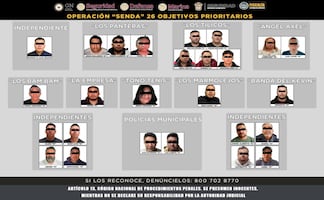In pre-Colonial times, the Aztecs needed nearly 26,400 feathers to elaborate a single Chimalli shield. The fact was revealed by researchers Laura Filloy and María Olvido during the conference “ Chimalli, Moctezuma’s Treasure in Chapultepec ,” in which they presented discoveries about the study and reconstruction of the Chimalli shield after a field research that lasted four years.
The event took place in the National College (Colnal) on Wednesday and was coordinated by archeologist Leonardo López Luján – Colnal member – in addition to having the participation of Salvador Rueda Smithers , director of the National Museum of History.

Filloy explained that “It was a researcher that caused curiosity to know absolutely everything about the Chimalli , as well as his relevance according to its historical context .”
When the Spanish arrived at Veracruz, 500 years ago , a great number of settlements, concentrated in the area known today as Tierra Caliente , paid tribute to the Aztecs with raw materials for the elaboration of shields, according to rescued documents from the 16th century, as explained the experts.
Have you heard of the
?
“We think, for instance, that the analyzed shield could have belonged to Moctezuma . We know that thanks to a European publication from 1584 ,” asserted Filloy.
During the symposium, they talked about the Fray Bernardino de Sahagún codex , a document that tracks the complex elaboration process of the Cuexyo Chimalli , where the breeding and hunting of birds are drawn, as well as elements that “ amantecas ” - feather artists of the Aztec empire – needed for its creation.
“The elaboration of Chimalli shows us a part of a family tradition that feather artists transmitted to their progeny, but it also shows us a community tradition which included goldsmiths, carpenters, and painters,” mentioned Olvido.
During the four years of the research, the archeologists could discover some elements of the composition of Chimallis in collaboration with a team of national institutions like the National Autonomous University of Mexico (UNAM), the Autonomous Metropolitan University (UAM), the National Polytechnic Institute (IPN), the National Institute of Anthropology , as well as European institutions.
Would you like to learn more
?
“We discovered at least 14 kinds of feathers from local, remote, and migratory birds; deer, rabbit, and ocelot skins ; several plant species like bamboo, agave, and cotton; gold and other precious materials ; animal fur and a paste made of Cochineal,” said Filloy.
María Olvido invited to think about the production and quality control of feathers to create mosaics and details extremely well elaborated in the shield. She added that each one needed over 26,000 feathers.
“We think hundreds of Cuexyo Chimalli were created; over 184 shields went away after the first meeting; it was a large load of work for artisans. The shields leaving [for foreign lands] is a symbol of the rob from the Conquest ,” she asserted.
Nevertheless, the archeologists mentioned that due to its complexity, the research could not abound in parts of the creative process of the plumage of the feather artists, and invited hard science experts to carry out research about it.
They highlighted that the piece was undervalued for 70 years since there was not enough information about its origin and meaning .
“Until the beginning of the 21st century, we didn’t even know what it was used for nor what it was. It was until these two great restaurateurs came close in 2014 that we discovered it was an engineering piece, in addition to estimating the damage caused by Cortés with his arrival,” added Smithers.
Have you heard of
?
Likewise, he pointed out the symbolic use of Chimalli, built from the artistic value given to it by Europeans through history.
“Art is one of the meeting points between cultures ; they were pieces equally beautiful both for the Aztec and the Europeans . The Cuexyo Chimalli worked as a diplomatic gift in the 16th century for Cortés and in the 18th century when Maximilian I brought it back.”
Currently, the hundreds of shields that crossed the world during five centuries are lost due to bad conditions in museums, mentioned the experts.
From the five still preserved, only two are in the national territory: the Tepacaliz in the National Museum of Anthropology and the Cuexyo Chimalli in the Chapultepec Castle , a venue that, from February to May, received over 220,000 visitors to the exhibition by the same name of the conference.
“We didn’t expect such an answer, but we’re glad people are interested in visiting these exhibitions,” said López Luján.
Did you know there are
?
mp
Noticias según tus intereses
[Publicidad]
[Publicidad]














